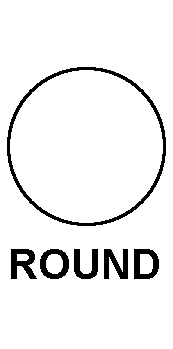6145012890728
Price Quote Get an up to date pricing and availability quote for this product. Order online or over the phone.
Quality Commitment
Serving our customers with quality and safety first.
- AS9120 Certified
- Audited supply chain
- ITAR Registered
- DDTC Registered
- HAZMAT Certified
- Customer service objectives
- Every product 100% inspected

6145-01-289-0728 Specification Set by the OEM (see RNCC code 3)
round
impedance 50 ohms
copper core conductor all conductors
Cross Reference Parts Part numbers that meet the specification outlined on this page and set by the OEM
Identification Item Identification Guide (IIG) and Item Name Code (INC)

Definition Definition of approved item name (AIN): "CABLE,RADIO FREQUENCY"
An item consisting of electrical conductors separated from each other by a continuous homogeneous dielectric (including porous types and touching and/or interlocking beads or spacers), and designed primarily for the conduction of radio frequency energy. Includes a single conductor inclosed in an outer concentric conductor (coaxial) with or without a protective sheath; two or more coaxial cables laid parallel with an outer electrical shield and/or common sheath; two or more parallel conductors with an outer electrical shield and/or a common sheath; two or more individually insulated twisted conductors with or without an electrical shield and/or protective covering. All types have low-loss or special characteristics at high frequencies. Refers to bulk quantities only; for items of definite length with processed ends or terminated in fittings, see cable assembly, radio frequency. See also line, radio frequency transmission.
6145-01-289-0728 Material Hazmat, Precious Metals, Criticality, Enviroment, and ESD
Indicates there is no data in the hmirs and the nsn is in a fsc not generally suspected of containing hazardous materials.
Precious metal content is unknown
The item does not have a nuclear hardened feature or any other critical feature such as tolerance, fit restriction or application.
Identification Codes
HMIC: Hazardous Material Indicator Code. A one position code that identifies a hazardous item.
PMIC: Precious Metal Indicator Code. A one position code which identifies items that have precious metals as part of their content. precious metals are those metals generally considered to be uncommon, highly valuable, and relatively superior in certain properties such as resistance to corrosion and electrical conductivity.
ESD: Electrostatic Discharge. Indicates if an item is susceptible to electrostatic discharge or electromagnetic interference damage. electrostatic discharge damage occurs when an accumulation of static electricity generated by the relative motion or separation of materials is released to another item by direct contact. electromagnetic interference damage occurs when an item comes into proximity with an electrostatic or magnetic field.
ENAC: Enviromental Attribute Code. Identifies items with environmentally preferred characteristics.
CRITL: Criticality Indicator Code. Indicates an item is technically critical by tolerance, fit, application, nuclear hardness properties, or other characteristics.






